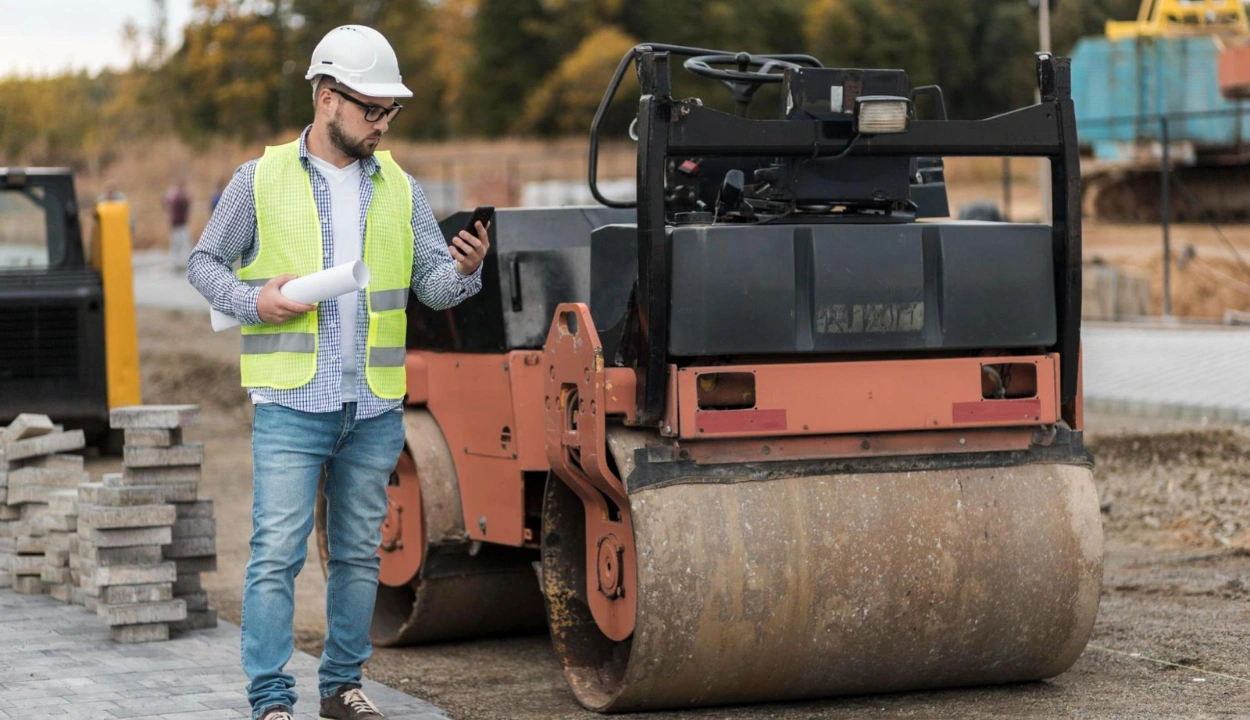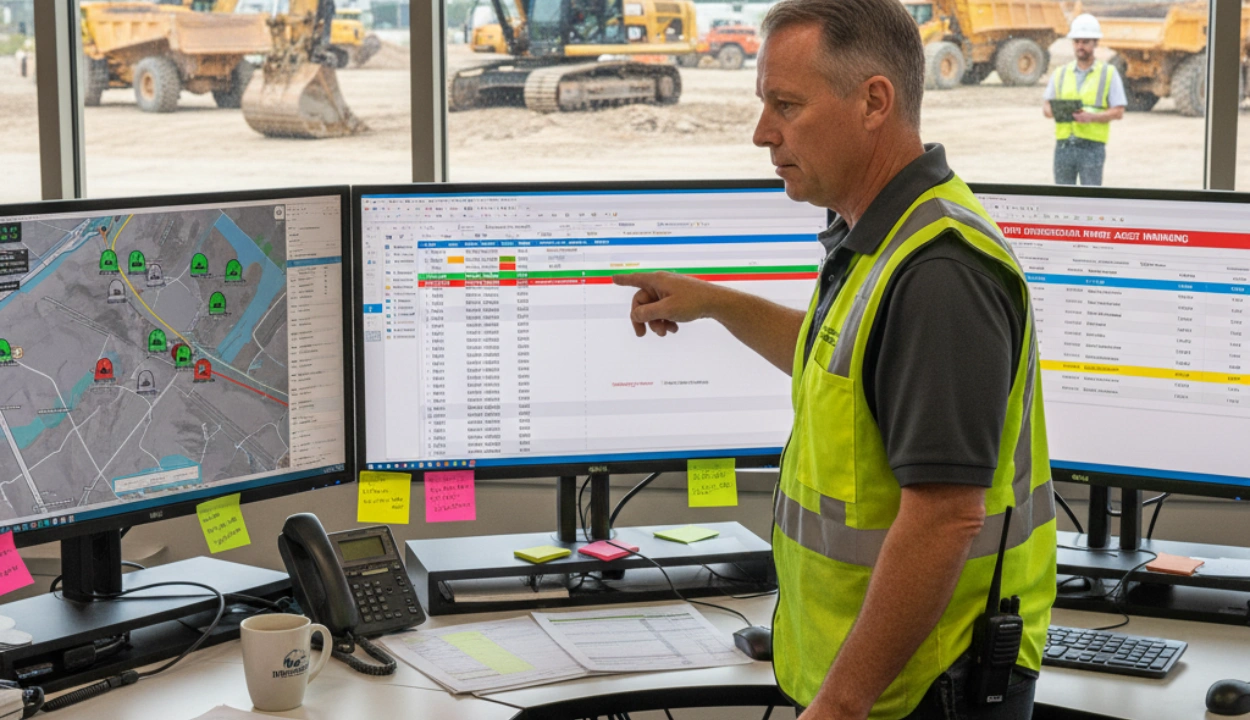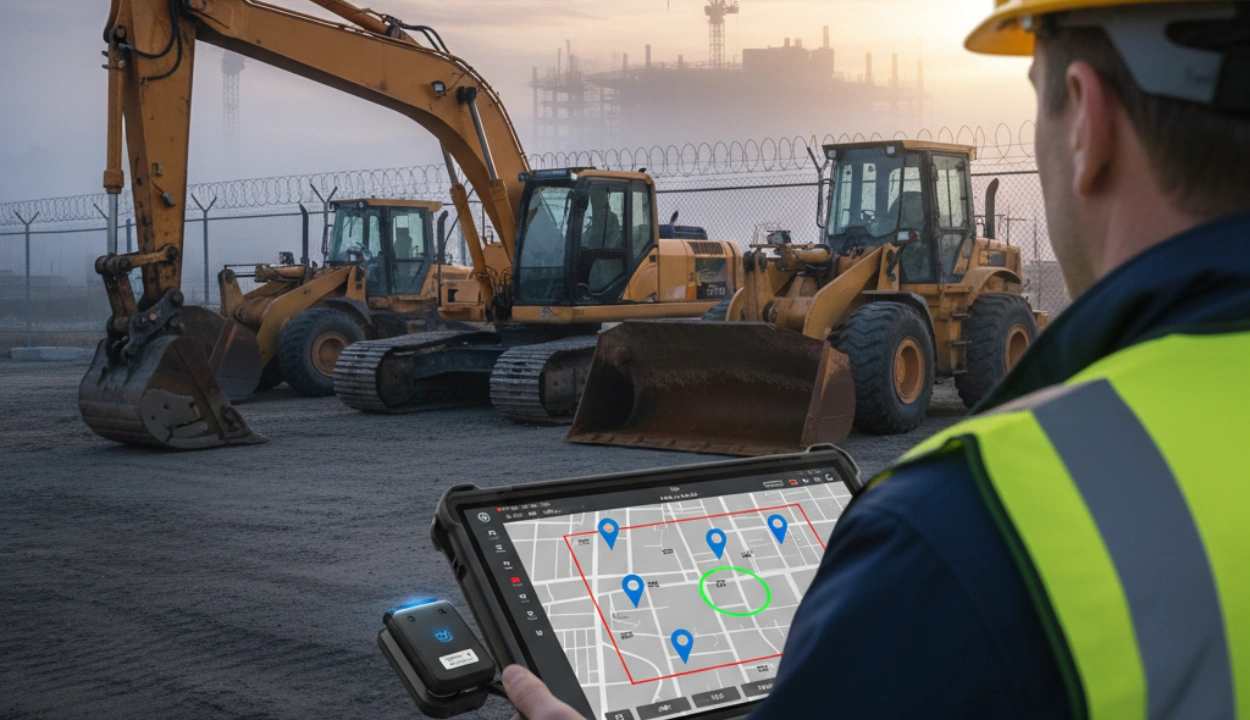How Automating Rental Reports Can Cut Equipment Costs
You're renting the right equipment and hitting deadlines, but costs still don’t add up and margins keep shrinking.
Sound familiar?
Across the construction industry, equipment rentals are eating into profits in ways that are hard to see on the surface: overages from idle machines, disputes over damage, late returns, and hours lost chasing paperwork from the field.
And in most cases, the root problem isn’t the rental vendor, it’s how you’re tracking rented equipment.
Too many teams still rely on spreadsheets, paper logs, and texts to manage rental activity. It works, until it doesn’t. One missed return date or undocumented inspection can wipe out thousands in margin.
The fix isn’t more admin. It’s automation.
Automated rental reports give you live, centralized visibility into every piece of rented equipment — where it is, how it’s being used, what it’s costing you, and when to send it back.
In this post, we’ll break down exactly how rental reporting automation helps cut costs, prevent downtime, avoid disputes, and streamline field-to-office workflows — so your team can focus on building, not babysitting machines.
The Real Cost of Renting Equipment

Rental costs go well beyond the quoted rate. The true cost of rented equipment includes:
1. Unplanned Downtime Due to Missed Maintenance
When equipment shuts down without warning, it costs a lot of money. According to research, losing access to IT systems can impose financial costs of $260,000 to $532,000 on businesses each hour. In the construction sector, companies with inadequate maintenance programs experience downtime rates as high as 30%, leading to substantial revenue losses.
2. Extended Rentals from Late Returns
Poor tracking of equipment usage and return schedules often results in extended rental periods. For instance, if a bulldozer generating $500 per day remains idle for 15 days due to scheduling inefficiencies, it leads to a direct loss of $7,500.
3. Disputes Over Equipment Condition

Inadequate documentation of equipment condition at the time of rental and return can lead to disputes, resulting in financial losses and strained client relationships. Research shows that damage costs per rental transaction can amount to 0.007% of the asset's market value. For a boom lift valued at $174,000, this translates to a loss of over $12 per rental.
4. Duplicate Rentals Due to Lack of Visibility
Without real-time tracking, companies may unknowingly rent equipment they already possess, leading to unnecessary expenses. Implementing effective asset tracking solutions can prevent such redundancies, optimizing equipment utilization and reducing costs.
5. Administrative Overhead from Manual Processes
Manual tracking and reporting consume valuable administrative time. It takes employees great effort to fill out paperwork, update reports and oversee communication within different departments. Working these tasks automatically can mean you spend less time and money.
Most of these issues come from outdated tracking systems where critical information is scattered across disconnected tools and formats.
If you’re making the same mistakes, get our full solution checklist in our Equipment Manager’s Playbook.
What Are Automated Rental Reports?

Automated Rental Reports
Automated rental reports are real-time, digital records generated by rental management or equipment inspection software. Instead of relying on paper logs, spreadsheets, or scattered messages, these reports consolidate everything you need to know about your rented equipment, into one accessible platform.
They provide jobsite teams and back-office staff with complete visibility into equipment status, location, and cost, so you can act faster, avoid surprises, and reduce rental waste.
Key features typically include:
- Digital inspections with photos and timestamps: Log equipment condition at check-in/check-out to prevent disputes.
- Live equipment condition updates: Catch issues early and respond before small problems become major downtime.
- Automated maintenance alerts based on usage: Prevent breakdowns by scheduling service using real-time engine hours or run-time data.
- Rental period tracking with cost summaries: Know exactly how long each asset is in use and what it’s costing you.
- Utilization insights: engine hours, idle time, GPS location: Identify underused equipment and optimize allocation across projects.
- ERP and billing integration: Reduce admin overhead and sync field data directly with your accounting system.
Four Ways Automated Rental Reports Help You Cut Costs
1. Prevent Downtime with Automated Maintenance Tracking
Unplanned downtime is one of the most expensive risks in equipment rental. Most of it stems from missed maintenance or unnoticed damage.
With automation, a single pane of glass can:
- Trigger alerts when service is due.
- Log service history directly in rental records.
- Attach inspection photos to document wear and tear.
2. Improve Equipment Utilization and Reduce Over-Renting
Without visibility into where equipment is and how it’s being used, it’s easy to rent machines unnecessarily or hold on to equipment longer than needed.
Automated reports help teams:
- Identify underutilized assets.
- Return unneeded rentals on time.
- Reallocate equipment between jobs.
3. Eliminate Billing Disputes and Damage Claims
Disputes over equipment condition or charges can damage relationships with rental vendors and delay project closeouts.
With Clue, field teams can:
- Capture visual proof of equipment condition at handoff.
- Timestamp all inspection data.
- Maintain a full audit trail of asset history.
This documentation reduces friction with vendors and saves thousands in unnecessary claims.
4. Cut Admin Time and Reduce Human Error
Manual logs and spreadsheets drain time from both field and office teams. Automation eliminates double entry and standardizes data across the board.
Benefits include:
- Automatic report generation for billing and insurance.
- Seamless workflows between jobsite and office.
- Real-time access to all inspection and rental data.
How to Get Started with Automation
- Choose the Right Platform
Look for tools that support mobile inspections, maintenance scheduling, GPS tracking, and accounting integration. Clue’s rental management solution gives you full visibility into every rented asset across your jobsites: condition, location, usage, and cost, all in one place.
Unlike generic asset tracking tools, Clue is purpose-built for construction, integrating equipment logs, inspections, and maintenance into a single, mobile-first platform.
Key capabilities include:
- Mobile check-in/check-out with photos and timestamps
- Real-time usage data (engine hours, idle time, GPS)
- Maintenance tracking based on actual run time
- Automated cost summaries and rental timelines
- Integration with ERP systems.
- Train Field Teams
Make inspections and check-ins mobile, fast, and easy to adopt, especially for operators and supervisors. Clue is designed to be used by the people actually handling the equipment, not just office admins. Operators and supervisors can log inspections, track conditions, and report issues from the field with just a few taps.
No training manuals required. Just intuitive workflows that match how your teams already work.
- Align Reports with Your Operations
Customize forms and workflows to match how your team already works. Avoid over-engineering. With Clue, you can tailor rental reports to your company’s specific workflows and reporting cadence, daily, weekly, per-project, or per-asset.
You can also segment reports by location, job, vendor, or equipment type, so you get the insights that matter, without the noise.
- Review Reports Regularly
Use the data. Set aside time each week to review usage reports, track idle time, and return unnecessary rentals early. Clue doesn’t just collect data—it helps you act on it. You can easily:
- Spot underused or idle rentals
- Return equipment before overages kick in
- Monitor wear and tear to plan maintenance proactively
- Track vendor performance and dispute charges with documented proof
Teams that review Clue reports weekly have seen significant reductions in rental costs, improved turnaround on returns, and fewer disputes with vendors.
6 Ways Clue Helps You Take Control of Rental Costs

1. Live Rental Inventory Across Projects
Know exactly what’s on rent, where it is, and who’s using it, across all jobsites. Clue gives you a live, map-based view of every rented asset: checked-in, idle, or overdue. No more guesswork or double-renting equipment you already have.
2. Check-In / Check-Out Logs with Time, Photos & GPS
Forget paper logs and WhatsApp photos. Clue logs every rental handoff with photos, timestamps, and GPS coordinates so you can track conditions, hold vendors accountable, and avoid disputes in return.
3. Idle Time & Utilization Tracking
Clue automatically tracks engine hours, idle time, and usage trends via asset utilization. You’ll know which machines are sitting unused and which ones are doing the work so you can return or relocate underused rentals before the next billing cycle.
4. Maintenance Tracking Based on Usage Data
Stay ahead of rental breakdowns with usage-based maintenance alerts. Clue ties inspections and service needs directly to engine hours and field usage, so you’re not blindsided mid-shift.
6. Custom Reports to Support Better Vendor Negotiation
Use your own rental history to negotiate better rates. Clue helps you export detailed logs, usage summaries, and vendor performance reports, so you can consolidate spend and push for better terms.
Final Thought
In construction, margins are tight and delays are costly. The companies that stay ahead are the ones that automate smartly, not just work harder.
Automating your rental reports allows you to track and manage equipment expenses better, waste less, get more insight and use less time. No matter the number of tools, everyone benefits from clarity, accountability and being fast.
Start small. Automate one report. Watch how quickly the savings show up with Clue.
Transform Your Equipment Management














